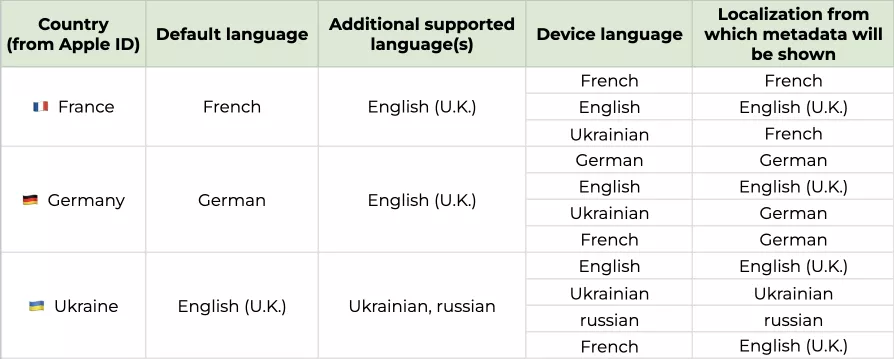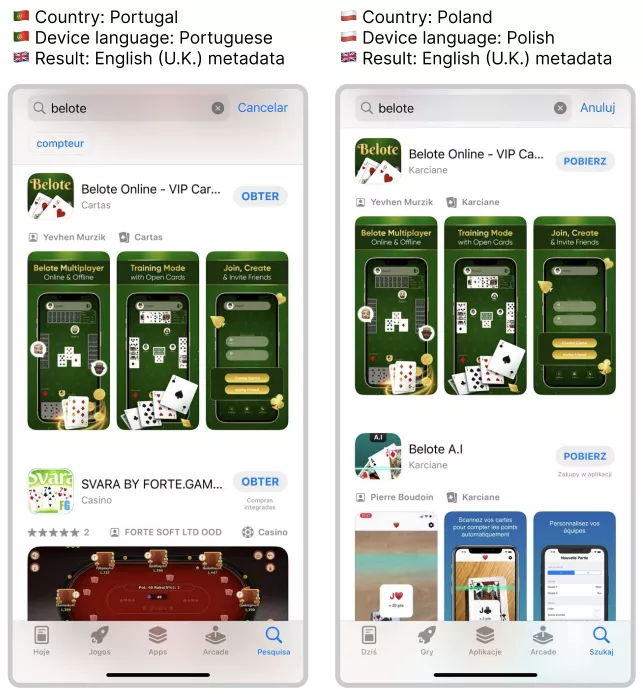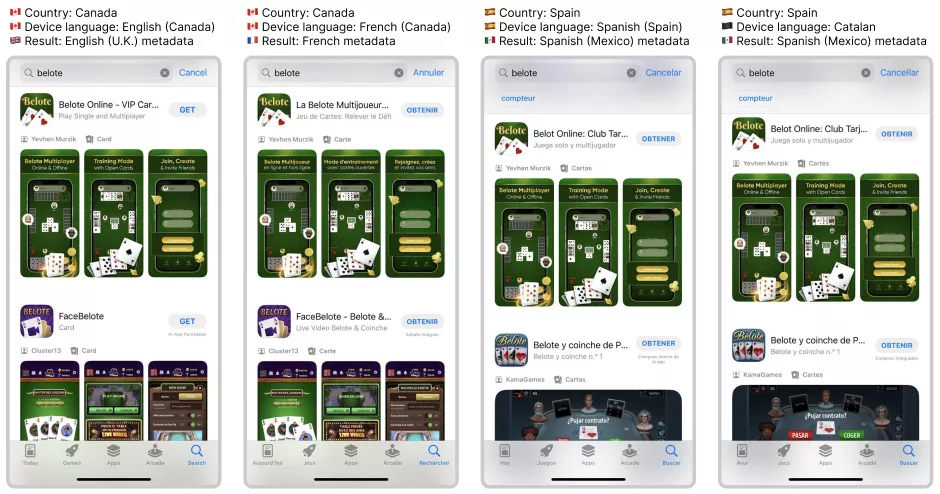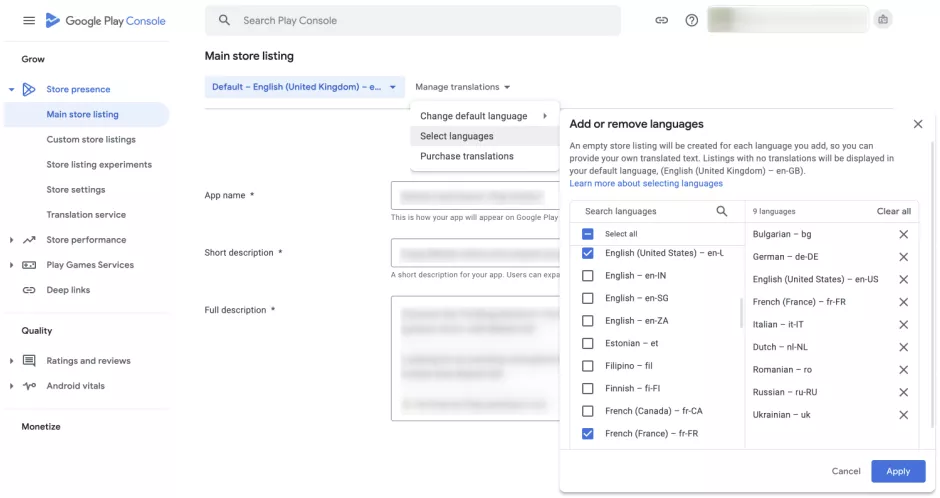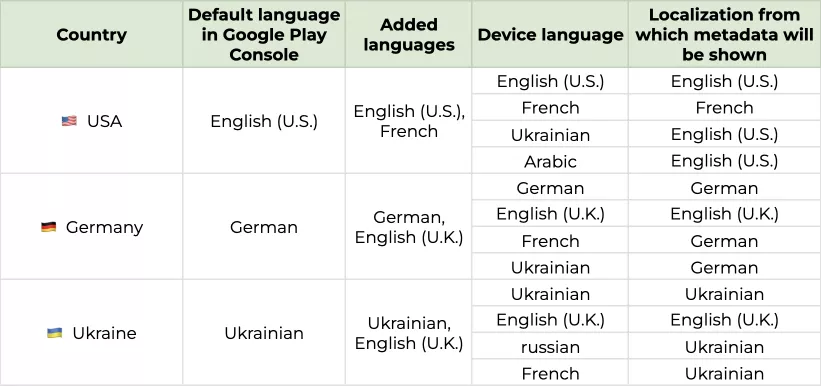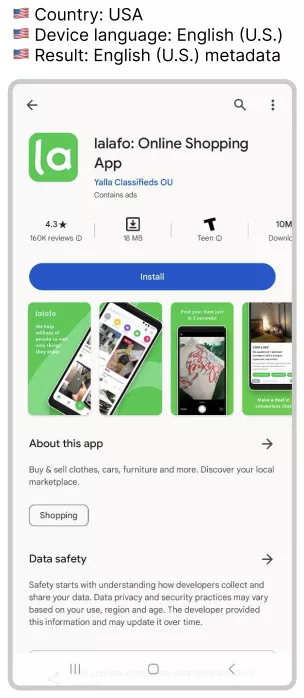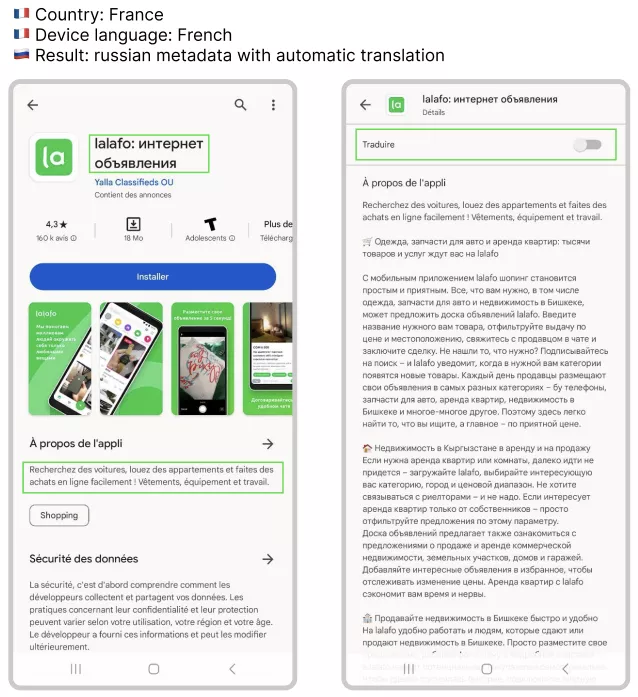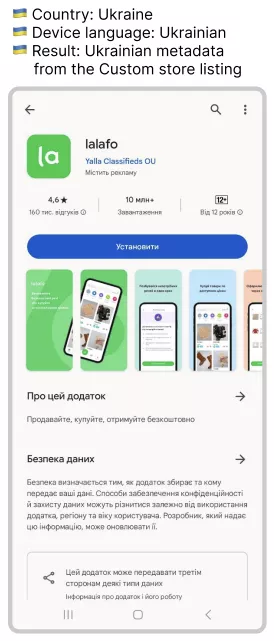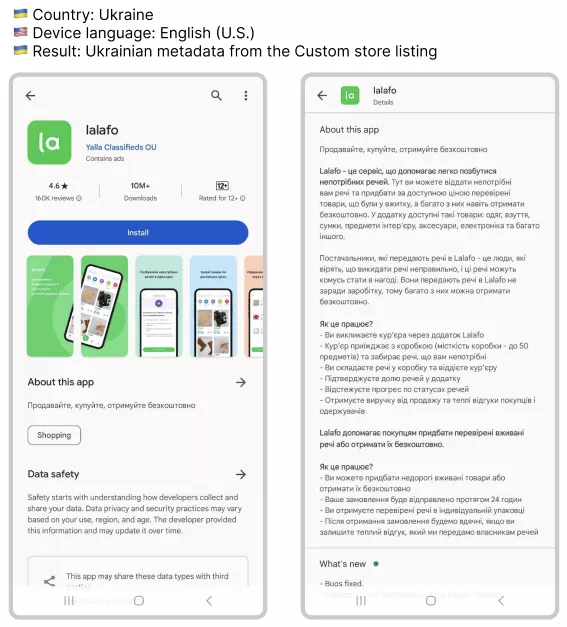App Store and Google Play Metadata Adaptation for Different Countries: a Must-have Guide
An app’s ability to generate revenue is driven in large part by the way it’s presented to users in different countries. The RadASO team shares some insights on the peculiarities of displaying the app’s name, description, and screenshots based on the user’s location. Save this handy cheat sheet!
App Store Metadata Display – How It Works
Localization is a variation of an app’s page in the App Store that is shown to users in a particular country. Each locale has its own set of textual and graphic metadata (name, description, and screenshots). These data are added via the developer’s console App Store Connect, which is used for app management.
At the time of writing, App Store Connect allowed to add up to 39 locales.
Each country may have 1 to 10 active locales. For instance, the UK has two locales – English (U.K.) and English (U.S.) while the USA has ten locales – English (U.S.), Arabic, Chinese (Simplified), Chinese (Traditional), French, Korean, Portuguese (Brazil), Russian, Spanish (Mexico), and Vietnamese. For the complete list of locales available for the particular country, refer to Apple’s help.
The factors influencing metadata displayed to users at the App Store
- The user’s country, as specified in their Apple ID account.
- Default language and additional supported language or that country. This info is available from the localization coverage table.

- Language set on the user’s device.
- Locales that are added for the app in the App Store Connect.
- The app’s Primary localization in the App Store Connect.
How metadata will be displayed to users
- A user sees Default language metadata for their country if this localization is added to App Store Connect and chosen in the device’s settings. It will also be shown if the device is set to a language that is not supported in this country.
- A user sees metadata in Additional supported language(s) for their country if this localization is added to App Store Connect and chosen in the device’s settings.
How metadata are displayed in the App Store – Example
App: Belote.
Added localizations: English (U.K.), French, Ukrainian, Spanish (Mexico).
Primary localization: English (U.K.).
- The user sees metadata in the Default language for France – French, as the device’s settings only allow two languages: French and Ukrainian (not supported).
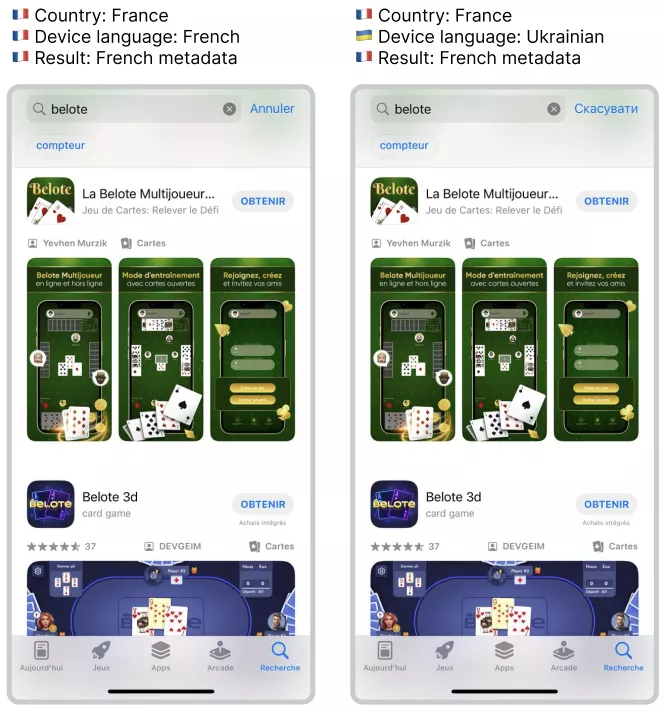
- The user sees metadata in the Additional supported language for France– English (U.K.), as English is chosen in the device’s settings.
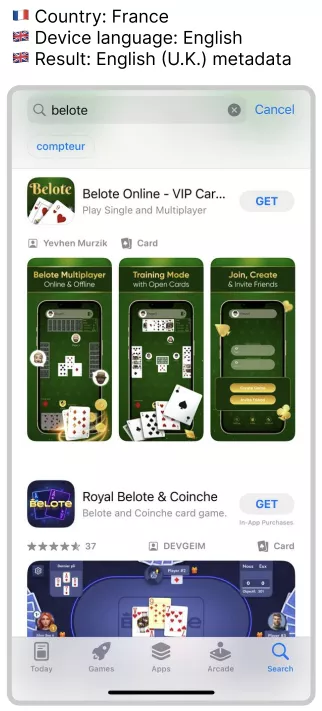
- The user sees metadata from the app’s Primary localization – English (U.K.), as the device’s Default language for Portugal is Portuguese, and the Additional supported language for Poland is Polish, neither of which is added to App Store Connect. The subtitle, in this case, is not shown.
- English (U.S.) ↔︎ English (U.K.) ↔︎ English (Australia) ↔︎ English (Canada).
- Portuguese (Portugal) ↔︎ Portuguese (Brazil).
- French (France) ↔︎ French (Canada).
- Spanish (Spain) ↔︎ Spanish (Mexico) ↔︎ Catalan.
For instance, there are no English (Canada), French (Canada), Spanish (Spain) and Catalan in the App Store Connect. However, it does have other locales mentioned above that will be shown instead of the missing ones.
Google Play Metadata Display – How It Works
In Google Play, the app can also have multiple page variations with textual and graphical metadata that are shown to users in different countries.
At the time of writing, the Google Play Console tool allows adding over 80 translations for the app’s main page.
The complete list is available on Google Play Help. Unlike the App Store, Google Play doesn’t limit access to any languages for a particular country.
Factors that influence metadata display in Google Play
- A device’s language settings.
- Languages added to the app’s main page via Google Play Console.
- The default language for the app’s main page that is set in the Google Play Console.
- Custom store listings – page variation with textual and graphic metadata shown only to the users from targeted countries.
How metadata can be displayed to the users
- The user will see metadata in the language set on their device if this language was added to the app’s main page via Google Play Console.
- The user will see metadata in the language set as default for the app’s main page if their device is set to a language that is not added to the app’s main page via Google Play Console.
Users will see auto-translated short descriptions and full descriptions with the auto-translation switcher.
How metadata are displayed in Google Play – Example
App: lalafo.
Localizations added to the app’s main page: English (U.S.), russian, and Ukrainian.
Default language:russian.
Localizations added to the store listing targeted at Ukraine: Ukrainian (Default).
1. The user sees metadata in English (U.S.), as their device is set to English (U.S.):
2. The user sees metadata in the Default language – russian, as their device is set to the language that has not been added to the app’s main page – French. The following parameters will be displayed:
- app’s name in the Default language;
- screenshots in the Default language;
- short description, auto-translated to the Default language;
- full description in the Default language with the auto-translation switcher.
3. The user sees Ukrainian metadata from the Custom store listing targeted for Ukraine, as the device is set to that language and the user is located in that country:
4. The user sees the Default language metadata from the Custom store listing, targeted for Ukraine – Ukrainian, as the device is set in a language different from the one added to the Custom store listing, and the user is located in Ukraine.
In that case, the user won’t see the auto-translated short description and the switcher for translation of the full description. This is why adding more languages to the Custom store listings is critically important so that users can see metadata in accordance with their device’s settings.
-
- English (U.S.) ↔︎ English (U.K.) ↔︎ English (Australia) ↔︎ English (Canada). English (Australia) ↔︎ English (Canada) ↔︎ English (India) ↔︎ English (Singapore) ↔︎ English (United Kingdom) ↔︎ English (United States) ↔︎ English (South Africa).
- French ↔︎ French (Canada).
- Portuguese (Brazil) ↔︎ Portuguese (Portugal).
- Spanish (Latin America) ↔︎ Spanish (Spain) ↔︎ Spanish (United States).
- Indonesian → Malay ↔︎ Malay (Malaysia).
- German → Romansh.
- Norwegian → Danish.
- Czech → Slovak.
- Chinese (Traditional) → Chinese (Hong Kong).
Therefore, it is critical to carefully plan the app’s localization in the app stores, taking into account all the aspects of metadata displayed in different countries. This will help ensure more efficient app representation, and improve conversion rate and user engagement, which will result in revenue increase.
Related Articles
What Is a Top-Level Domain?
You will receive a cheat sheet that will help you choose the right domain name and avoid making insidious mistakes. You will also learn where to buy valuable and well-known TLDs
Google Play ASO: Ultimate Guide on App Store Optimization for Android in 2024
RadASO presents the main methods of app promotion on Google Play and useful lifehacks to choose the best ASO strategy for an Android app.
How to Increase Organic Traffic by 27% in Six Months in a Competitive Women’s Clothing Niche: The Lace Case Study
What does it take to launch an email channel, which emails were most effective, and what results were achieved in four months of work?


